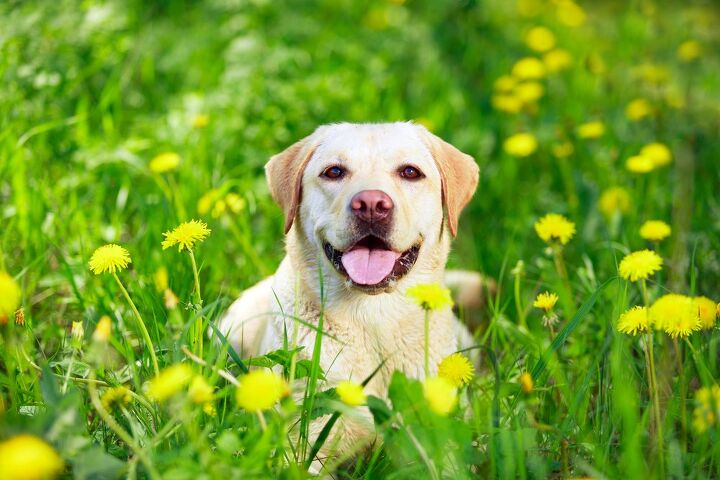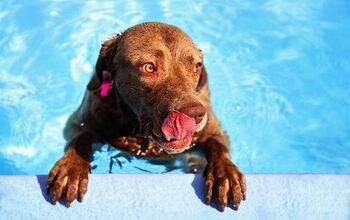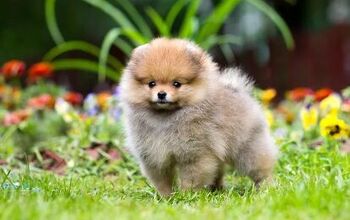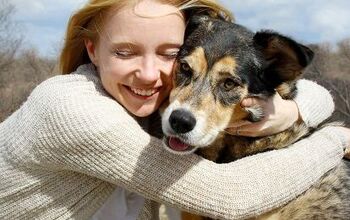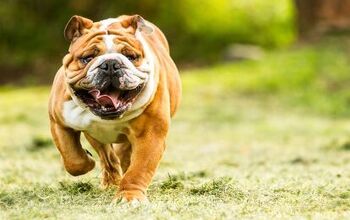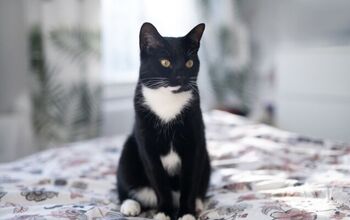Top 10 Smelly Dog Breeds

While those of us who are dog owners have all experienced that funky wet dog smell that seems to permeate the car and living space during hot, humid weather, we need to consider ourselves lucky if that’s the only odor our fur-kids are emitting. We’re going to take a look at 10 super smelly dogs who seem to generate their own “scent” regardless of the weather. That’s right, these furry four-legged stink-bombs are known for the foul odors that seem to emanate from various bodily orifices. But while some of these pooches are slaves to their digestive tracts and all it puts forth, some odors are within our ability to control, so take note of the tips we’ve shared!
There are a few reasons this sweet boy with the droopy ears and hang-dog expression made the list. Basset Hounds are known to be extreme droolers and with that comes the funky, always damp smell that coats your floors and furnishings so designated easy-wash blankets are a must for pet parents of this breed. I mentioned there were a few reasons for his smelly scent and another one is his ears. Dogs with long droopy ears tend to be prone to a yeast-bacteria infection because of the lack of air movement under those floppy flaps and with the Basset Hound’s extremely narrow ear canals this can become chronic. Be sure to inspect and clean regularly to avoid the constant head-shaking and foul smell that comes from poor ventilation. And finally, this pooch is also prone to a skin infection called lip-fold pyoderma that occurs within the folds of skin under his lower jaw (which is usually continually moist). It’s uncomfortable for him and smelly for you, so regular cleaning and inspection are a must. (Photo credit: pranee mankit/Shutterstock)
This is another lovable pooch that has a few things working against him when it comes to smelling his very best. First of all, like the Basset Hound, the Cocker Spaniel has long droopy ears that are particularly prone to infection if not inspected and cleaned on a regular basis – which can be as simple as a quick wipe-out with a damp cotton ball on a weekly basis. This little guy is also known to have a heavier than usual sebaceous gland secretion which means he has an oilier coat that requires more frequent bathing to avoid that greasy look and the stale smell that comes with it. If your pup’s skin is dry but his coat is oily, opt for a 2-in-1 shampoo with a moisturizing component. If his skin has actually advanced to being sore or damaged, be sure to select a medicated shampoo that will help heal as it cleans. (Photo credit: Labrador Photo Video/Shutterstock)
Anyone who owns a Lab knows this dog tends to carry a heavy doggy odor that someone unaccustomed to the breed, will notice immediately upon entering your home. A big part of the odor is that he was bred to possess a thick, waterproof double-coat that contains extra oils to repel water and keep him dry when he’s retrieving waterfowl. You’ll find the smell kicks in particularly heavily when he’s become wet and hasn’t dried out entirely. You can try towel-drying but the smell will never entirely leave and because these oils are important for a healthy coat, constant bathing isn’t a good option for this breed. Which makes the bottom line pretty simple – love the Lab, love the smell. Or you need to be prepared to fall in love with another breed. And while we’re on the subject of bathing…did you ever meet a dog that liked to roll in poop and stinky smells more than a Lab does? Be aware of this passion whenever you’re in those doggy leash-free zones and see him drop to the ground. If you can, try cleaning him to an acceptable standard with a hose or wet rags before you resort to the full-on shampoo. (Photo credit: DragoNika/Shutterstock)
This stocky boy with the determined gait and the great big grin is a little stinker that tends to drool heavily so best to have a “special” blanket (or two) that are just for him and that you can toss down and then throw in the wash every couple of days. Heavy skin folds combined with the drool can result in a smelly yeast-infection called lip-fold pyoderma so meticulous care must be taken to clean (and dry) his facial creases. And because he is prone to teeth misalignment and smelly dental issues including plaque and decay he’ll need regular check-ups with the vet to keep this serious issue in hand. Anatomically, your Bulldog doesn’t digest food well and with that comes some pretty serious flatulence so check out the many foods and additives that can aid in this regard. Or learn to walk alongside versus behind him during outings! (Photo credit: Grigorita Ko/Shutterstock)
Another heavy drooler who brings that special “scent” to every sofa he lays on, this big boy is known for sharing his slobber with those around every time he licks his lips or shakes his head. While this is simply the nature of the breed you can take steps to help alleviate the damp, funky smell in your house and vehicles by using blankets or towels in his favorite sleeping or sitting areas and ensuring his face and neck are always clean. Thick fur can just wick up the heavy slobber and when left unchecked, can result in a constantly stale and seriously smelly ruff. Look for a quality dog shampoo and use a sponge or washcloth to avoid eye areas and keep his face, neck and chest always clean and fresh. During hot summer weather, daily attention may be needed. (Photo credit: Grigorita Ko/Shutterstock)
If you’ve been reading about the smelly yeast infections that can come from dogs with heavily wrinkled features, you’ll understand why this pooch requires diligence when it comes to cleaning. Aside from the bad smell that emanates from the heavy skin folds that cover his entire body, the moisture and bacteria that accumulates in them can cause infections that are super painful for him such as Hereditary Cutaneous Hyaluronosis in which the skin actually blisters. To prevent these infections, plan to fully bathe your Shar Pei 3 to 4 times per week with particular attention paid to the folds. Use a dog shampoo and be sure to thoroughly dry them out. If his skin looks irritated, use an anti-bacterial or anti-fungal balm to stave off infection. And because facial folds can collect moisture from food and water, do a quick inspection and cleanup several times a day to keep him smelling fresh. (Photo credit: Ricantimages/Shutterstock)
This cute little pooch with the bug-eyed expression is known for being one gassy little guy and when you add in the funky smell that can come from his heavily wrinkled face, well you just don’t know which end is up. Like the Old English Bulldog, the Pug’s physical characteristics make smells of the digestive nature, a special added bonus to this little stink bomb. He tends to eat his meals quickly and has to put his face right into the dish which means he wears a lot of his food on his chin and within his facial folds – which we now know can lead to infections. Yes, a smelly and messy situation if not caught and cleaned after each meal but one that can be also alleviated if you check out some of the specially designed bowls for brachycephalic dogs that are tilted to allow easy, clean access. Alas, it doesn’t end there as our animated little friend is also known to need regular attention paid to his anal glands. If you notice a strong, fishy smell coming from his nether regions or he now entertains friends and family by scooting across the floor, it’s time for a visit to the vet where this stinky affliction can be dealt with. (Photo credit: Azukari Photography/Shutterstock)
Foul smells come in all sizes and the little Yorkie is a prime example. This pint-sized pooch with the flowing locks has oily skin that can result in seborrhea due to heavy sebaceous gland excretions. With that comes flaky skin and often smelly infections as the oil and skin particles plug hair follicles and become sore and itchy. So, in spite of all the rules about bathing a dog only as needed, this little guy needs regular suds to keep him not only smelling great but healthy too. But that’s not all for this little stinker. Add to that the dental issues that come with smaller dogs whose tiny jaws become overcrowded and can result in tooth decay and a heavy smelling breath as well as the bits and pieces of old food that can collect in his little beard and you’ll understand why this pooch’s high maintenance persona is in fact a reality. (Photo credit: Steve Bruckmann/Shutterstock)
Similar to a Labrador Retriever, this little guy’s B.O. is actually an important odor that has a purpose. You see, because these hounds were bred to hunt in packs with other dogs, their individually distinctive smell helps the others in the pack keep track of each member during the hunt. While this doesn’t help pet parents who are dealing with that funky doggy odor we all hate, it does explain why constant bathing isn’t the way to go with a Beagle. Purchase some easy-to-clean blankets you can put out for him and wash them frequently to keep the smell down. And because this pup also has an oilier coat, check him periodically for skin infections that may be caused by blocked sebaceous glands. This little guy’s signature floppy ears can also cause him to pick up a funkier than normal smell if they haven’t been checked and cleaned. A weekly swab with a damp cotton ball is all it takes to lessen at least some of the smells this loveable little stinker puts out there. (Photo credit: Grisha Bruev/Shutterstock)
This beautiful, dignified boy with the chiseled jaw line and muscular build is known as much for his farting as his guard-dog capabilities. Yes, his flatulence has been described as “profound” and is down to his facial structure. You see the flatter face of brachycephalic dogs causes them to ingest a lot of air when eating. Send that air through his digestive system and it comes out the other end smelling a lot different than when it went in. What to do? Check out some of the bowls that are designed to slow down eating. Deep crevices and shapes cause him to have to work to get his food rather than eat in gulps. Less gulps = less air = less farting. Additionally, Boxers are prone to suffering from food allergies that can result in itchy skin, infections and diarrhea – all smelly conditions that can unfairly label your boy as stinky. Most common allergens in food include beef, dairy, wheat, egg and chicken, so if your pooch is becoming persona non grata on the sofa, check out the various brands that address the common allergens or speak to your vet for recommendations. (Photo credit: Joshua Oxendale/Shutterstock)

Sharing space with three seriously judgy Schnoodles and a feline who prefers to be left alone. #LivingMyBestLife
More by Mary Simpson






